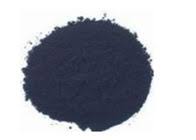Exploring the Rich History and Cultural Significance of Natural Indigo Dye in Textile Arts
The Allure of Famous Natural Indigo A Blue Tribute
Indigo has captivated humanity for centuries, its rich hue weaving itself into the cultural, historical, and economic fabric of societies around the globe. Known for its deep, vibrant blue, natural indigo has been celebrated not just for its striking color, but also for its fascinating production process and the stories woven into its use.
The Allure of Famous Natural Indigo A Blue Tribute
The process of extracting indigo is as intricate as the resulting color is profound. Unlike synthetic dyes, which can be produced in a factory setting, natural indigo requires a meticulous harvesting process. Farmers cultivate indigo plants, harvesting the leaves when they reach their peak color. These leaves are then steeped in water, allowing a fermentation process to take place that liberates the indigo pigment. After several days, the liquid is aerated, leading to the striking transformation of the color as it turns from green to blue. The pigment then precipitates out, is collected, and dried into cakes that can be transported and used for dyeing textiles.
famous natural indigo with blue

In various cultures, the symbolism of blue has profound meaning, often representing spirituality and the infinite. In Japan, indigo dyeing, known as aizome, has been practiced for over a thousand years and is intertwined with the nation's identity. Traditional garments like the kimono and noragi were often dyed with indigo, embodying both practicality and beauty. The durability of indigo-dyed fabrics made them favored among farmers and laborers, eventually extending into modern fashion as designers rediscovered the timeless appeal of indigo.
In recent years, the resurgence of interest in sustainable and natural materials has brought indigo back into the spotlight. Environmentally conscious consumers are gravitating towards textiles that are free from chemical processing. Natural indigo fits perfectly into this narrative as it is biodegradable and poses fewer environmental risks compared to synthetic alternatives. Additionally, indigo farming can bolster local economies while promoting traditional agricultural practices.
Moreover, indigo's versatility extends beyond textiles. Artists and artisans are utilizing this natural dye in various forms of art, including paintings, ceramics, and home décor. The deep blue is used as a foundation for creative expression, allowing its users to engage with both its aesthetic and cultural significance.
In conclusion, natural indigo is more than just a pigment; it is a medium through which history, culture, and sustainability converge. Its journey from plant to dye reflects a rich tapestry of human ingenuity and artistry. As we embrace a future that values ecological integrity and celebrates craftsmanship, indigo stands as a testament to our enduring connection to the natural world and the beautiful possibilities that arise from it. Whether seen in the soft folds of a hand-dyed textile or splashed across a canvas, natural indigo will continue to inspire awe with its captivating depth and resonance—a truly timeless shade of blue.
-
The Timeless Art of Denim Indigo Dye
NewsJul.01,2025
-
The Rise of Sulfur Dyed Denim
NewsJul.01,2025
-
The Rich Revival of the Best Indigo Dye
NewsJul.01,2025
-
The Enduring Strength of Sulphur Black
NewsJul.01,2025
-
The Ancient Art of Chinese Indigo Dye
NewsJul.01,2025
-
Industry Power of Indigo
NewsJul.01,2025
-
Black Sulfur is Leading the Next Wave
NewsJul.01,2025

Sulphur Black
1.Name: sulphur black; Sulfur Black; Sulphur Black 1;
2.Structure formula:
3.Molecule formula: C6H4N2O5
4.CAS No.: 1326-82-5
5.HS code: 32041911
6.Product specification:Appearance:black phosphorus flakes; black liquid

Bromo Indigo; Vat Bromo-Indigo; C.I.Vat Blue 5
1.Name: Bromo indigo; Vat bromo-indigo; C.I.Vat blue 5;
2.Structure formula:
3.Molecule formula: C16H6Br4N2O2
4.CAS No.: 2475-31-2
5.HS code: 3204151000 6.Major usage and instruction: Be mainly used to dye cotton fabrics.

Indigo Blue Vat Blue
1.Name: indigo blue,vat blue 1,
2.Structure formula:
3.Molecule formula: C16H10N2O2
4.. CAS No.: 482-89-3
5.Molecule weight: 262.62
6.HS code: 3204151000
7.Major usage and instruction: Be mainly used to dye cotton fabrics.

